How To Waterproof Underwater Pool Windows – Quick Guide [2025]

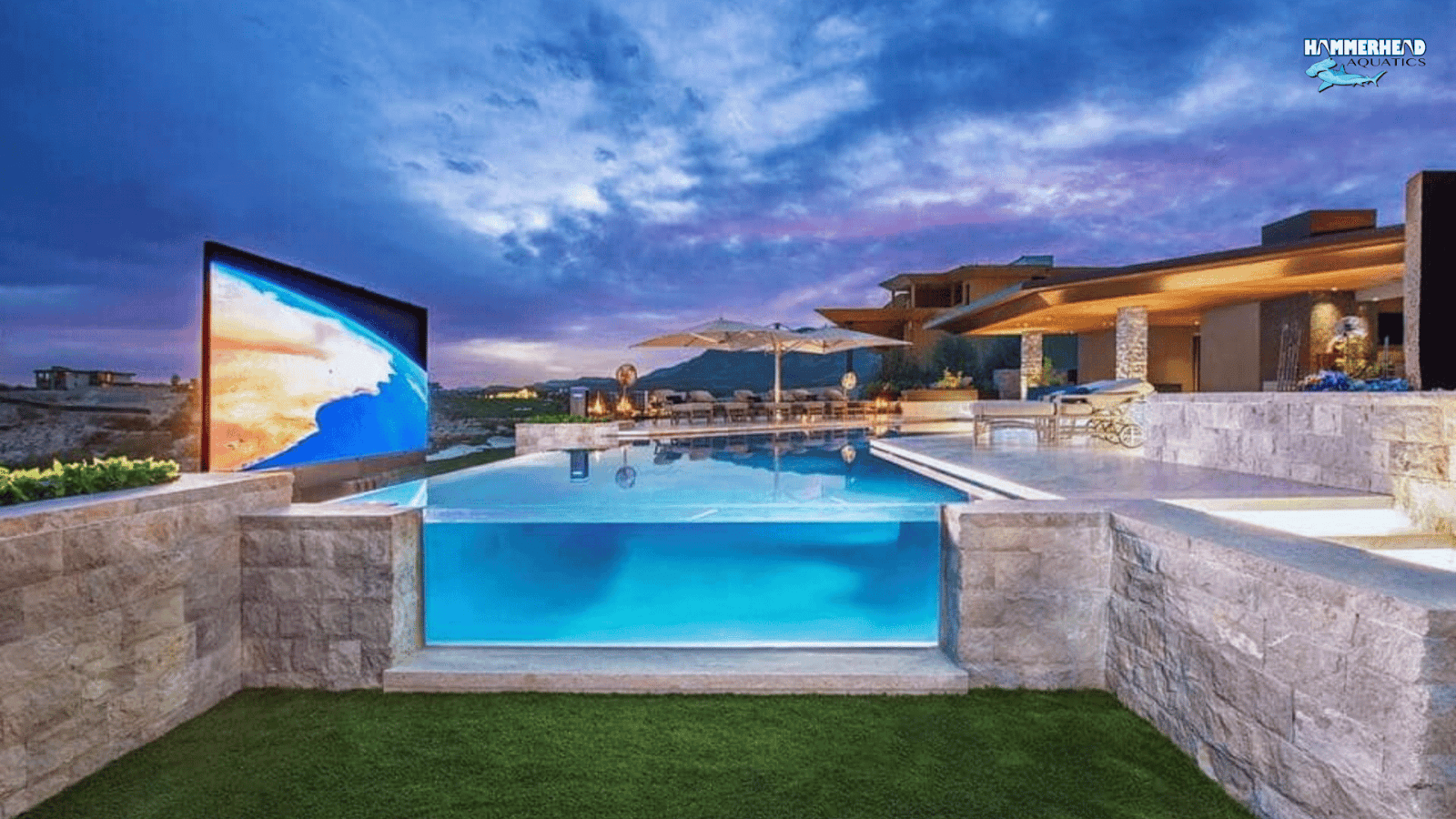
If you’ve ever seen water seep through what was supposed to be a “sealed” underwater pool window, you know it’s not just a small problem… It's a nightmare. And most of the time, the leak doesn’t show up right away. It shows up months or even years after installation, when fixing it means tearing into concrete, tile, or a finished pool wall. I’ve seen this happen more times than I’d like to admit, usually because underwater window waterproofing was treated as an afterthought instead of part of the actual installation.
That’s why I decided to put my experience into words and prepare this guide where I walk you through how to waterproof underwater pool windows the right way.
Whether you’re curious, planning a project, doing research, or fixing someone else’s mistake. I’ll explain it the same way I’d walk a builder, client, or new installer through it on-site.
Let’s begin.
TL;DR - Key Takeaways
- Waterproofing underwater pool windows doesn’t start at the sealant stage. It starts before the window even touches the wall.
- The frame, recess, membrane, and panel all have to work together. You can't rely on “just silicone” for underwater window waterproofing.
- Use materials made for underwater pressure: marine-grade sealants, proper gaskets, and flexible membranes.
- Concrete, acrylic, and glass all move differently when pressure and temperature change. Account for that in pool window waterproofing.
- Testing before filling the pool is not optional.
- Most failures come from trying to “make it fit” instead of designing the joint properly.
You may consider consulting with experts in setting up underwater windows (such as Hammerhead Aquatics), to get this done if you notice leaks, or planning to get a pool with underwater windows.
Now, let’s get into the details.
Why Waterproofing Underwater Pool Windows Matters More Than Most People Think
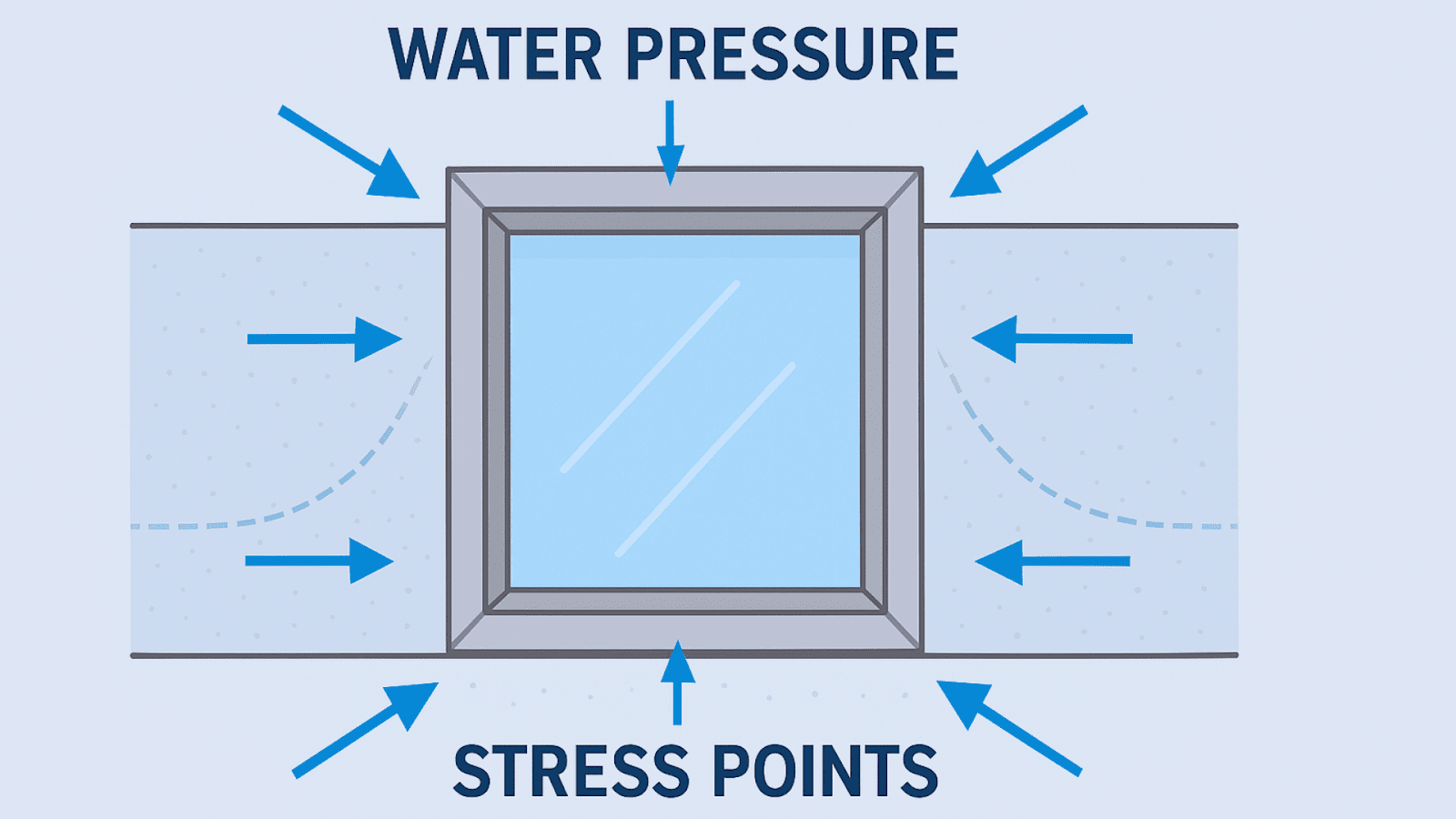
People assume “once the glass or acrylic is sealed in, it’s fine.” That’s the mistake. An underwater pool window constantly fights against:
- Water pressure
- Structural movement
- Thermal expansion
- Chemicals (chlorine, salt, pH shifts)
- Condensation
- Material fatigue
One tiny gap in the membrane or sealant can send water behind the frame, and you won’t see the problem until there’s mold, rust, or visible leakage. Proper underwater window waterproofing prevents these issues.
Types of Underwater Pool Windows & What Changes in Waterproofing
Even if you're not the installer, understanding the material helps you understand the logic behind waterproofing underwater windows.
1. Acrylic Panels
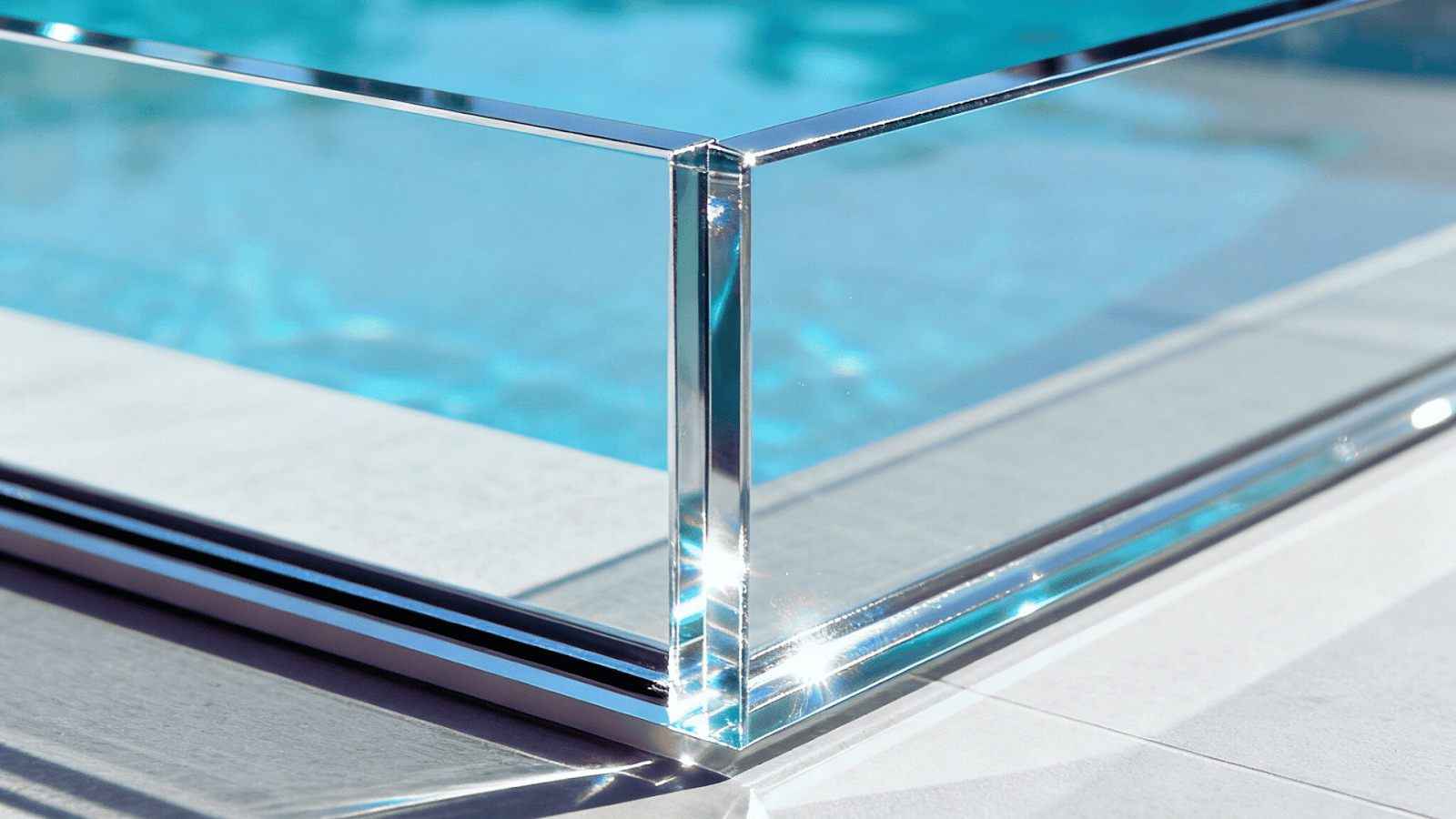
- Common in pools and aquariums.
- They flex slightly and expand with heat.
Needs a gasket or flexible sealant, not a rigid bond.
2. Laminated Glass
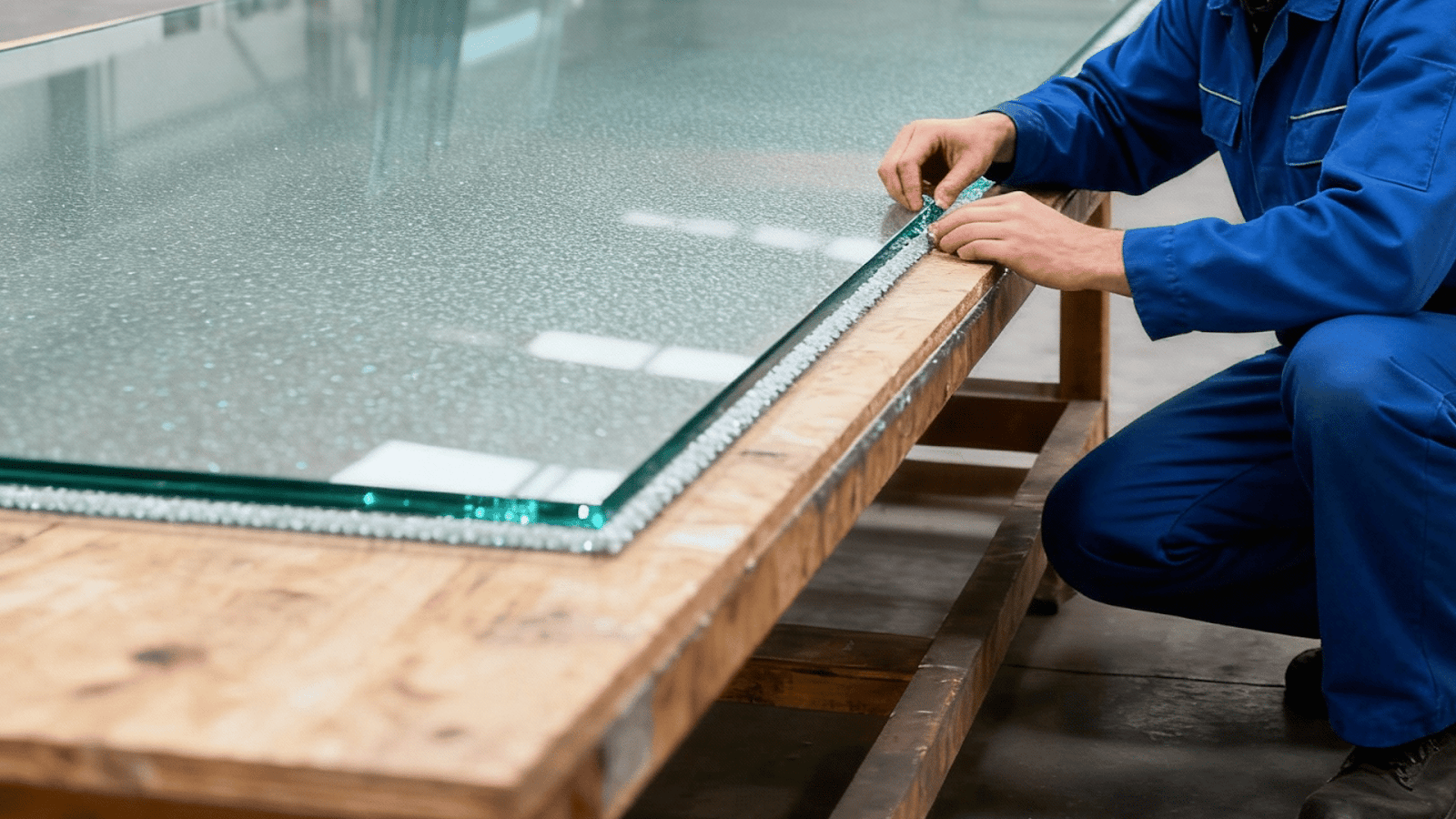
- Heavier, more rigid.
- Doesn’t flex like acrylic.
- Needs strong compression and a multi-layer seal.
3. Frameless Recessed Panels

- Usually set into concrete.
- Waterproofing depends heavily on membranes and how clean the recess is.
- If the recess is out of level or dirty, underwater window waterproofing will fail later.
Step-by-Step: How to Properly Waterproof Underwater Pool Windows
Now, let’s get into a step by step process to waterproof underwater windows for swimming pools.
1. Prep the Substrate Before Anything Else
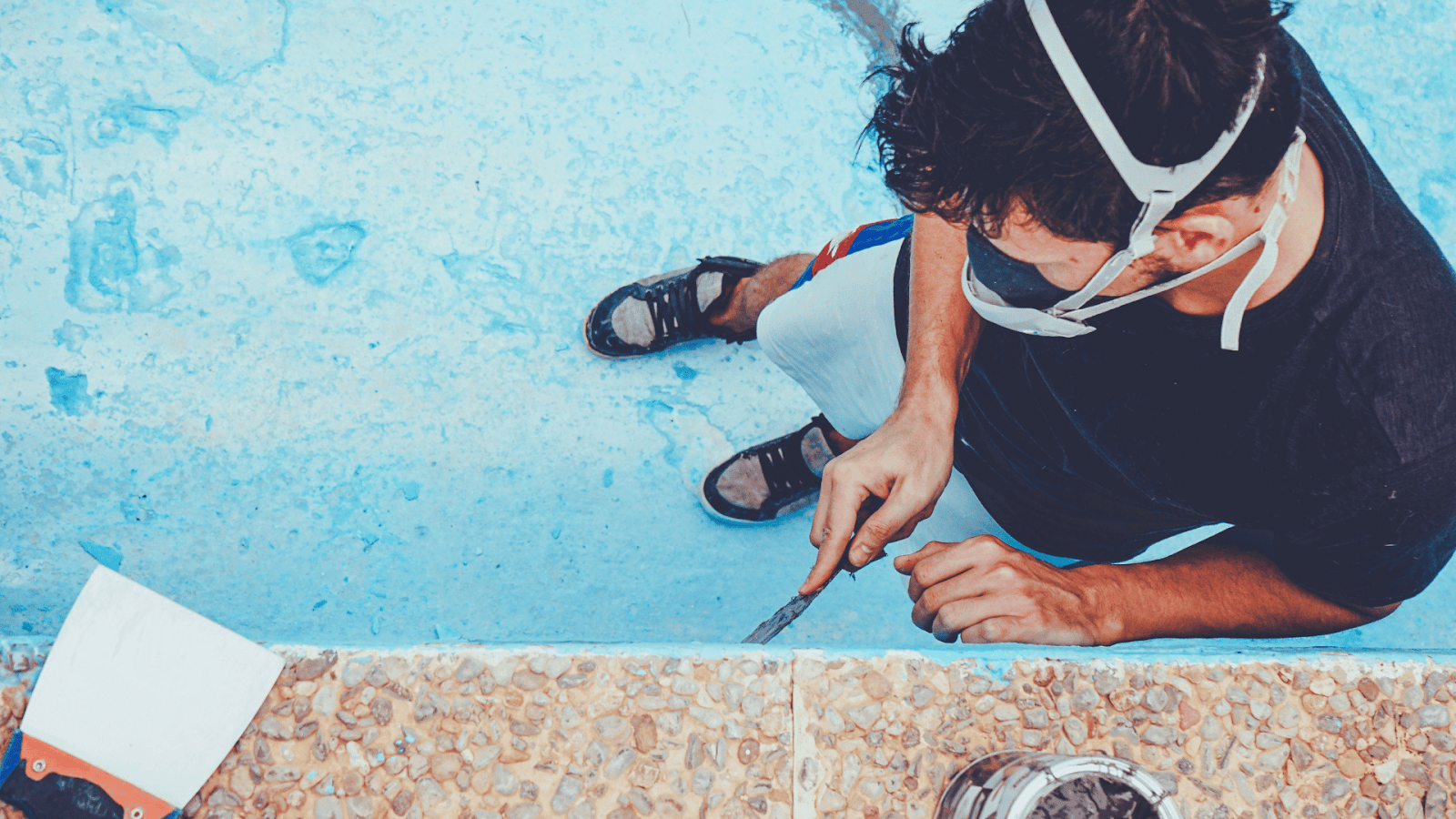
You don’t start with sealant… you start with the surface.
- Clean out dust, loose material, laitance, residue, form oil.
- Level the recess so the panel sits with even pressure.
- Prime or treat the concrete so membranes bond properly.
Skipping this step is why people end up re-installing underwater pool windows later.
2. Install the Right Frame (or Recess System)

Not all frames are equal. The wrong metal or shape will corrode, flex, or crack seals.
Common reliable options:
- 316L stainless steel (best for saltwater and longevity)
Epoxy-coated steel (cost-effective if done correctly) - PVC or thermoplastic frames (mostly for acrylic and small windows)
Look for:
- Space for gaskets
- Fixing anchors that won’t rust
- Expansion allowance
- Compression control
3. Add Waterproof Membranes (Don’t Skip This)
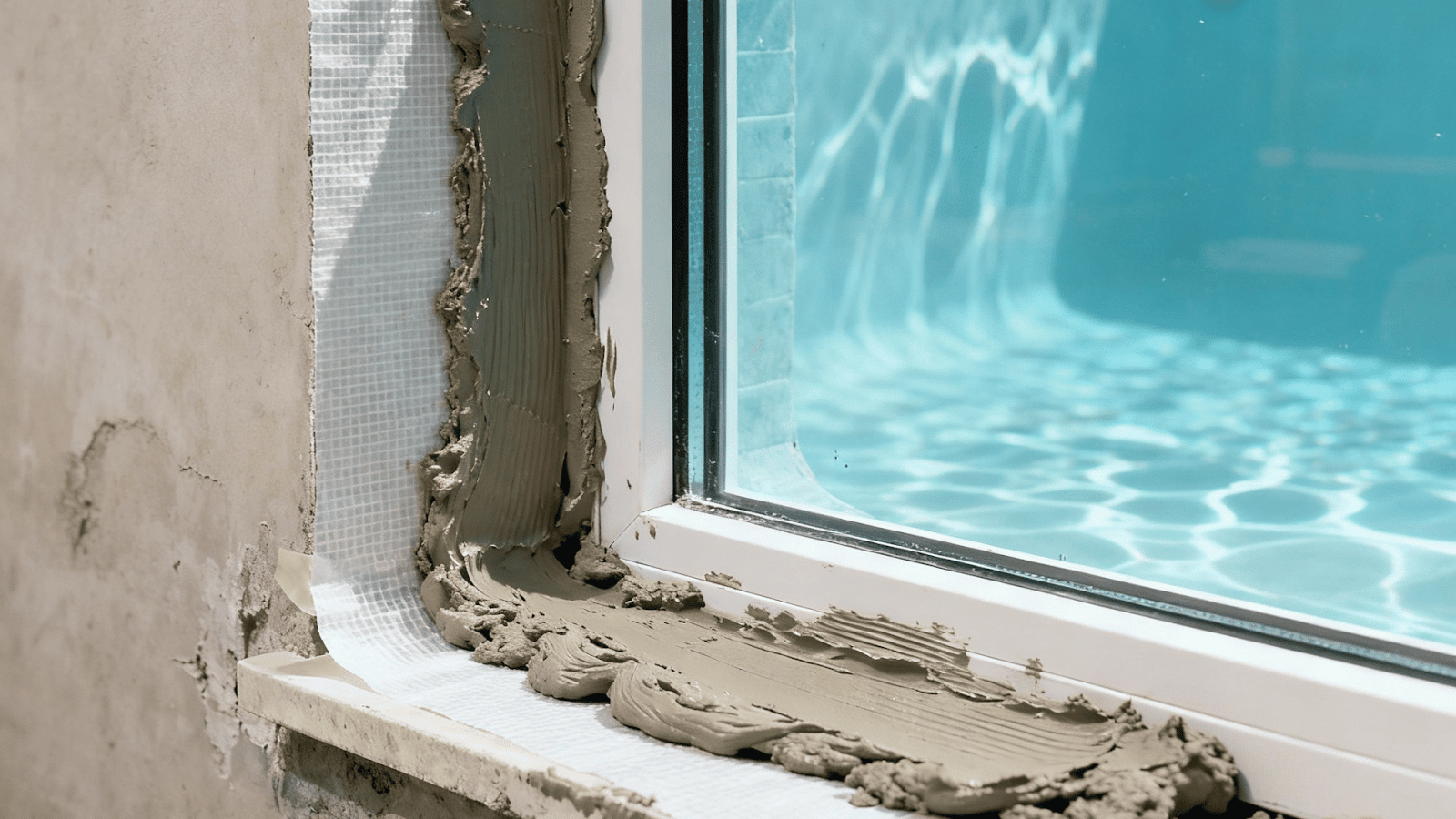
This is one of the most commonly skipped steps in DIY or low-cost installs.
The best setup for underwater window waterproofing is layered:
- Main waterproof membrane (cementitious or polyurethane)
- Reinforcing mesh at window edges
- Flexible secondary membrane overlapping onto the frame
This prevents moisture from sneaking behind the assembly and rotting it from the back.
4. Use Setting Blocks or Spacers — Don’t Rest the Panel Directly
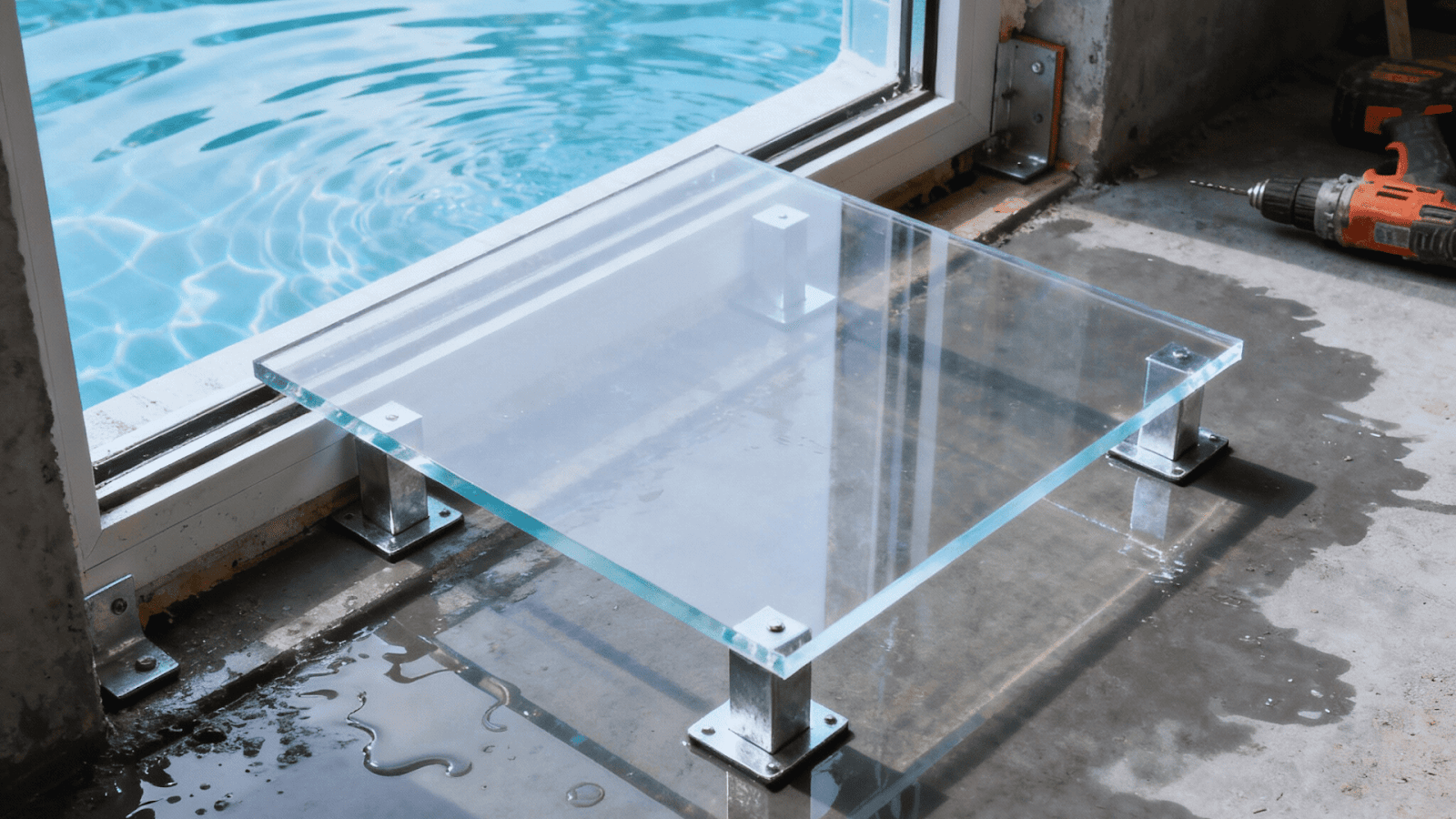
Never let the panel sit directly on concrete or metal.
Setting blocks:
- Spread the weight
- Keep the gap consistent
Prevent stress cracking (especially with acrylic)
5. Sealant and Gaskets Go In Before the Panel
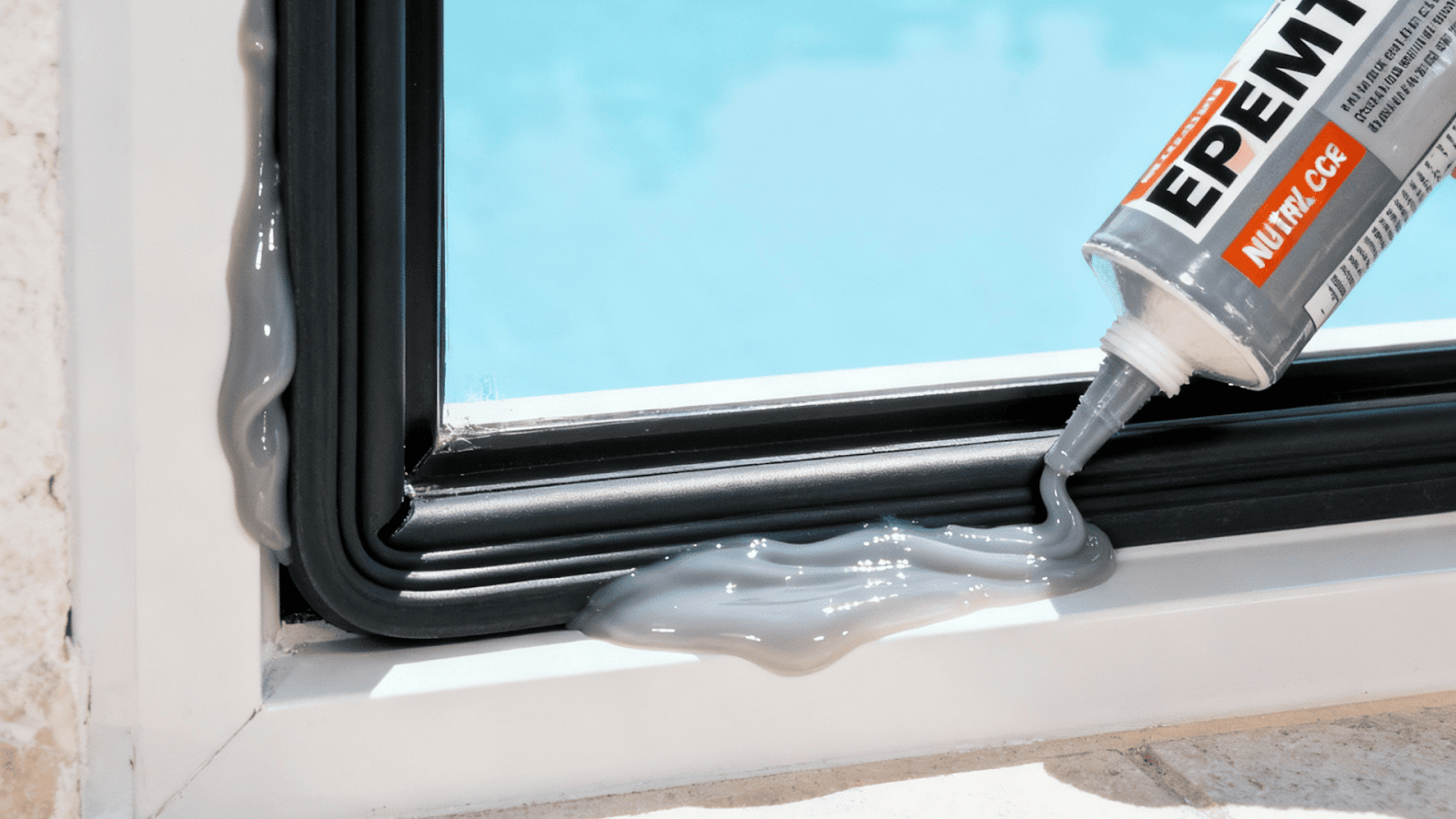
Here’s where most failures start: the wrong sealant.
What actually works long-term:
- EPDM gaskets
- MS polymer
- Structural silicone (neutral cure only)
- Hybrid polyurethane
What does NOT work:
- Kitchen/bath silicone
- Aquarium sealant
- Painter’s caulk
- “Whatever was in the truck”
Apply:
- Internal perimeter seal
- Frame-to-shell membrane connection
- External edge protection where needed
6. Set the Glass or Acrylic the Right Way

When placing the panel:
- Use suction or rigging; don’t wedge it.
- Leave a small buffer (3–8 mm) all around.
- Tighten evenly. Don’t crush the gasket or pinch one side.
Over-tightening may cause the seals to fail after the first winter or pressure change.
7. Finish With Final Waterproofing Layers
After the panel’s set:
- Seal the visible perimeter (internal and/or external)
- Add finishing trim or cover plates if required
- Check all meeting points between membrane, sealant, and frame
- Don’t grout, tile, or finish around it until you’ve tested it.
8. Test Before Filling the Pool
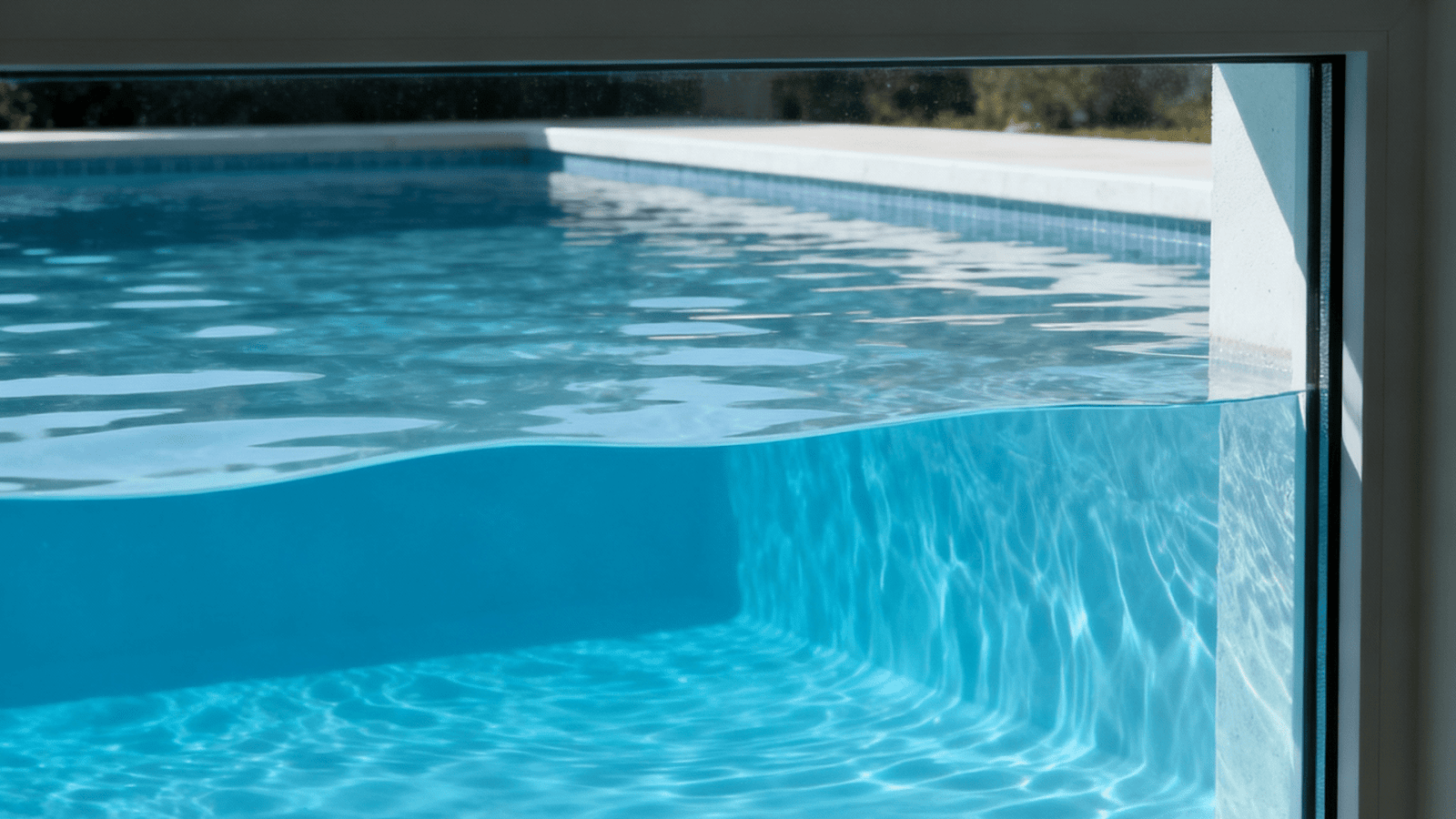
A quick fill and pray approach is what causes rework.
Better approach:
- Local water test around the panel
- Dye test on seals
- Watch for 24–72 hours before covering with finishes
Trust me, it’s cheaper to fix now than after tiling.
Mistakes That Cause Leaks Later (Real Ones I've Seen)

So, it’s really not all that complicated. Remember to avoid the mistakes below to reduce chances of leakage.
- Skipping membrane overlap
- Leveling with sealant instead of fixing the recess
- Using bathroom silicone
- Assuming acrylic and glass behave the same
- Forgetting about thermal movement
- No hydrostatic test
- Setting glass directly into wet cement or tile adhesive
- Thinking “the grout will help seal it” (it won’t)
These are the jobs that call back months later with fogging, mold, or active leaks. Avoid them with proper underwater window waterproofing.
Final Thoughts
Waterproofing an underwater pool window isn’t about squeezing sealant in the gap and hoping for the best. You need to plan for pressure, movement, water chemistry, lifespan, and maintenance.
When it’s done right, that window should last 20–30 years without a hint of leakage. When it’s done wrong, it’s just a countdown to a very expensive fix.
Expert Underwater Window Installation for Pools
If you're planning a new underwater window or trying to make sure one doesn't leak down the road, you may consider consulting with my team, Hammerhead Aquatics. Our team handles underwater glazing, underwater window waterproofing, and custom installs the right way, no shortcuts, no guesswork. Contact us for a free quote.
If you want advice, a quote, or just need to sanity-check a plan, drop a comment and I will try to answer promptly.
FAQs
1. Can you waterproof an existing underwater pool window without removing it?
Sometimes. If the leak is from the sealant edge, you can rework it from the outside. If the membrane or frame is the issue, the panel needs to come out.
2. What sealant is safe for underwater window waterproofing?
Marine-grade MS polymer, EPDM gasket systems, neutral-cure structural silicone, or hybrid polyurethane. Anything else is temporary at best.
3. How thick should the panel be?
Acrylic is usually 50–100 mm for residential pools. Laminated glass varies by depth and panel size, but thickness alone doesn’t waterproof it — the sealing system does.
4. How long should waterproofing last?
If it’s installed properly, 30+ years. If corners were cut, you’ll see issues in 1–5 years.
5. Can a general builder handle this?
Not usually. Even skilled builders get caught out by pressure, expansion, and membrane sealing if they haven’t done submerged glazing before.
Proper waterproofing of underwater pool windows is a specialized job requiring precise planning, materials, and execution. Engage experts like Hammerhead Aquatics for installation, waterproofing, and custom glazing to ensure your window withstands decades of pressure, movement, and chemical exposure. Avoid shortcuts that lead to leaks and structural damage. Early testing, high-quality membranes, correct frame choice, and balanced sealant application will protect your investment and bring stunning, leak-free underwater windows to life. Contact Hammerhead Aquatics for advice, free quotes, and professional installation to secure your pool’s future.











